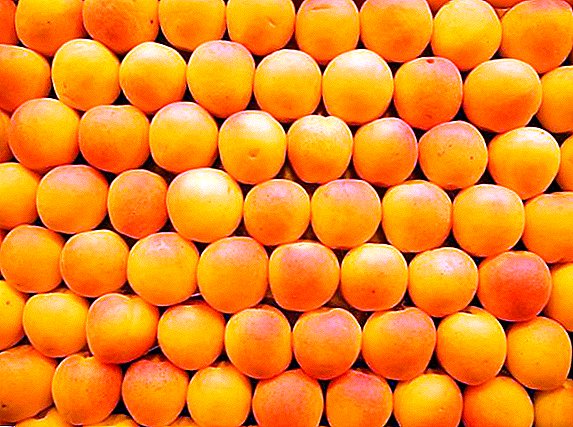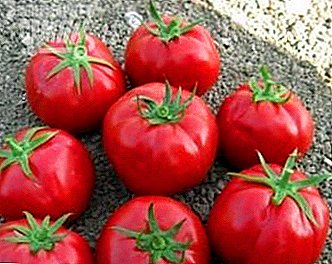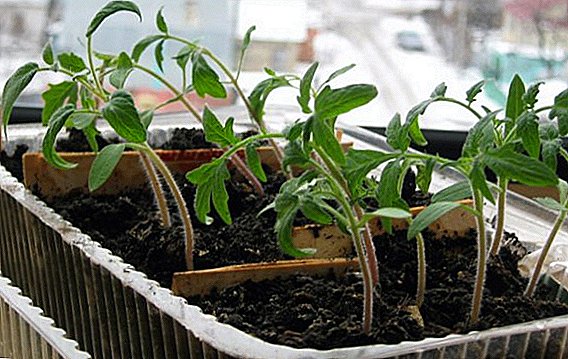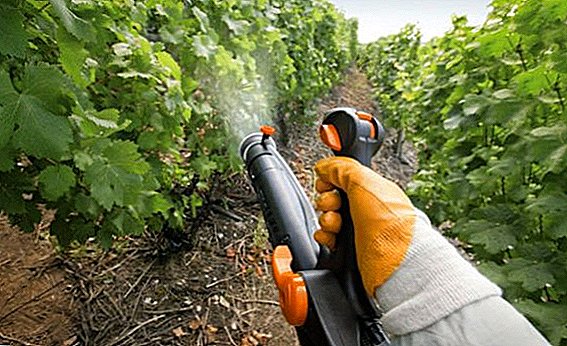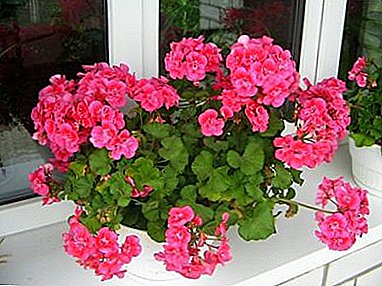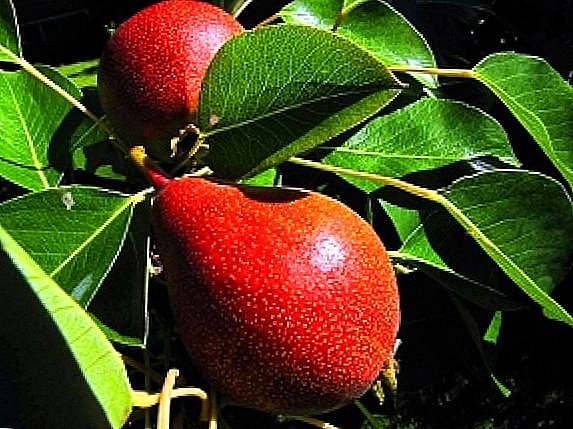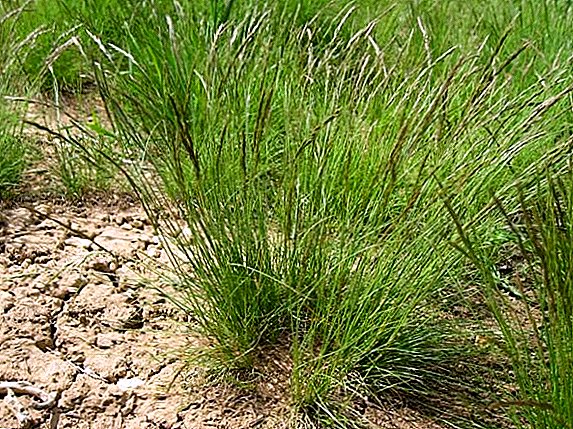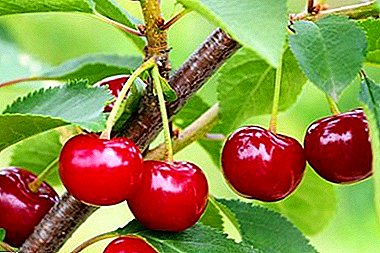
One of the most common and sought-after fruit crops in the middle lane is cherry.
Recently, a lot of new varieties.
Among them, one of the most ancient and beloved by gardeners is the cherry variety - Vladimirskaya.
Breeding history and breeding region
 There is an opinion that Vladimir cherry is the very first cultivated variety this berry. The exact time the appearance of cherries in the Russian lands is not known for certain.
There is an opinion that Vladimir cherry is the very first cultivated variety this berry. The exact time the appearance of cherries in the Russian lands is not known for certain.
Presumably, the seedlings of this plant were brought to Ancient Russia by Greek monks as early as the 11th century. from Asia Minor.
This cherry got its name. in honor of the city of Vladimir, in which, by order of the son of Yuri Dolgoruky, cherry orchards were first planted.
However, reliable documentary information about the Vladimir gardens appeared only in the 17th century. A very long time Vladimirskaya cherry variety was considered one of the best cherry varieties.
But over time, many others appeared, surpassing it in yield, stability, and in taste, too.
This variety has several varieties: Dobroselskaya, Izbyletskaya, Roditeleva, Gorbatovskaya.
You can grow this variety everywhere, but the best yields are in temperate and warm climates. In the northern regions, the yield is much lower.
Among the high-yielding varieties should pay attention to the memory Enikeeva, Podbelskaya, Chernokorku and generous.
It was zoned in 1947 and quickly gained popularity. This cherry is suitable for growing, both on own sites, and in industrial gardening.
 Recommended for cultivation in Central, Volga-Vyatka, North-West, Middle-Volga and Central Black Earth regions of the Russian Federation.
Recommended for cultivation in Central, Volga-Vyatka, North-West, Middle-Volga and Central Black Earth regions of the Russian Federation.
Often Vladimirskaya cherry can be found in the gardens Belarus, Ukraine and other CIS countries.
Appearance cherry Vladimirskaya
Consider separately the appearance of the tree and fruit.
Tree
Vladimir cherry is not very tall, bush plant, reaching a height of about 3 m, with a sprawling spherical crown.
Grafted saplings take the form of a single-stem tree, and grow on their own roots in the form of a bush.
The bark is a light gray color, scaly. The crown is rather sprawling, with drooping slightly leafy branches.
Annual shoots are yellowish brown in color and slightly down.
 Leaves rich dark color, elongated, with a sharp tip and small notches on the edges.
Leaves rich dark color, elongated, with a sharp tip and small notches on the edges.
The scape is thick, about 12 mm long.
Flowers of small size, bright white, saucer-shaped, with petals slightly forked at the ends, growing in small inflorescences.
Fruit
The berries are not large, they are often small, weighing about 2-3 grams. Form rounded, slightly flattened at the side seam. The color of the fruit is maroon, with small gray specks.
The flesh is fleshy, sweet and sour, with a thick juice, bright red. When growing in the southern regions, the sugar content in the berries is much higherthan fruits growing to the north. The bone of this cherry is small and easy to separate.
A characteristic feature of the variety is that the greatest number of fruits grows on annual young branches.
Vladimir cherry begins to bear fruit 4-5 years after disembarkationgrafted seedlings - a little earlier in 2-3 years.
A photo





Characteristics of a variety
Vladimir cherry refers for varieties with an average maturity. Harvesting can begin at the end of July and continue as the berries ripen. Leaving them for a long time on the branches is not worth it, because they are prone to rapid shedding.
 This grade considered to be winter-hardy enough but when t decreases to -30C, partial freezing of the bark and fruit buds is observed, which leads to a decrease in yield.
This grade considered to be winter-hardy enough but when t decreases to -30C, partial freezing of the bark and fruit buds is observed, which leads to a decrease in yield.
A good winter hardiness is demonstrated by Tsarevna, Ashinskaya, Zhivitsa and Black Large.
When growing in the cold northern climate, the entire harvest from one tree can be as little as 5-6 kg. Whereas in the middle and southern latitudes from the same tree collect 25-30 kg of berries.
Vladimir variety is self-infertile.
Vladimirskaya Cherry - a variety that requires additional pollinator, or rather, pollinators of at least 2-3 varieties.
The best for her will be: Bottle pink, Lyubskaya, Moscow Griot, Turgenevka, Shubinka, Lotova, Vasilyevskaya, Pink Amorel, Rastunya, Fertile Michurin, Consumer goods black.
Cherry Vladimirskaya perfectly is suitable for preparation of jam, jam, jam, it is applied to fast freezing and drying, and also can be used fresh.
Next, you will learn how to properly fit and care, which requires Vladimirskaya cherry.
Planting and care
 Before planting, the first thing you need to prepare the ground. For this, the selected area is digged and organic and mineral fertilizers are applied.
Before planting, the first thing you need to prepare the ground. For this, the selected area is digged and organic and mineral fertilizers are applied.
Planting is carried out in the spring, and it is advisable to prepare the soil in the fall. Cherry variety Vladimirskaya does not like sour soil, so it must be lime.
For this you can use as dry lime and wood ash.
It is best to plant Vladimirskaya cherries at once with several varieties of pollinators and place them on the leeward side in order to ensure better pollination.
The place should be well warmed and lit and located on a small hill. It is also necessary to comply distance between seedlings is not lesse 3 m
Pits for planting should be about 100 cm wide and 60-70 cm deep, and they prepare in advance. In the center have a planting peg and fall asleep cooked a mixture of humus, superphosphate, wood ash and topsoil.
Seedlings desirable to choose annual and, if possible, vaccinatedwith well-defined roots. The top of such seedlings is necessary trim, leaving about 70 cm tall.
This variety does not like deep planting.
 Before planting, a bucket of water is poured into the prepared hole and the seedling is placed.
Before planting, a bucket of water is poured into the prepared hole and the seedling is placed.
It is carefully sprinkled with earth and loosely tied to a peg with a soft cloth or rope. Soil around planting mulch humus.
After planting the plant requires careful care, which is forming pruning, watering and fertilizer.
In hot weather, watering can spend 2-3 times a month, after which the soil must be loosened and mulched.
One plant accounts for about 2 buckets of water. It is recommended to feed young saplings in the second year after disembarkation, in the spring. Nitrogen and potash fertilizers are best suited for this.
Crop cherry is also carried out in the spring. The formation of the bush continues until the crown is formed 6-7 large main branches.
Annually remove weak, damaged by frost or disease branches. For the winter period, the lower branches and part of the trunk must be carefully wrap with thick thick material, for protection from frost and hares.
Among the shortcomings of this variety can be noted susceptibility to damage by coccomycosis and moniliasis.
Diseases and pests
 Coccomycosis is a fungal disease that affects the leaves and berries of the cherry.
Coccomycosis is a fungal disease that affects the leaves and berries of the cherry.
Its appearance can be identified by the presence of dark red dots on the leaves, which eventually blur, turning into spots.
Affected leaves begin to turn yellow and crumble. Infected berries dry up and die.
You can fight this disease with the help of a triple spraying leaves with bordeaux mixture harvesting fallen leaves and thoroughly weeding and digging the soil.
Resistance to fungal diseases have Zhivitsa, Tamaris, Kharitonovskaya and Fairy.
Monilioz quite a dangerous and unpleasant disease. Externally, it looks like a burn on the leaves and branches. Over time, the affected parts of the plant are covered with small grayish growths that grow, leading to the death of branches, leaves and berries.
In order not to lose the crop, it is necessary to carry out timely processing of plants and soil. copper or iron vitriol and Bordeaux mixture. Such treatments are carried out both before and after flowering. Affected leaves and branches are cut and burned.
Vladimir cherry can often be attacked by such a pest as cherry aphid To avoid its occurrence, it is necessary to weed and loosen the soil around the tree in a timely manner and remove excess root growth.
This aphid is dangerous because it feeds on sap of leaves and shoots, which leads to their complete drying and dying. Fight her well helps insecticide treatment.
 The variety of cherries Vladimirskaya is very popular and widespread in the suburban areas of many gardening enthusiasts.
The variety of cherries Vladimirskaya is very popular and widespread in the suburban areas of many gardening enthusiasts.
Its undoubted advantages are high yield, great taste and good frost resistance.
The disadvantages include susceptibility to coccomycosis and monoliosis, but this is typical of most varieties of cherries.
This most ancient type of cherry, undoubtedly, deserves attention, and for good reason takes the first place on a degree of distribution, both in amateur, and in industrial fruit growing.
If you are looking for a suitable unpretentious variety of cherries, pay attention to Zhyvitsa, Tsarevna Felt, Morozovka and Vyanok.
Watch the video in which you will find out why cherry fruits do not bear fruit well.


